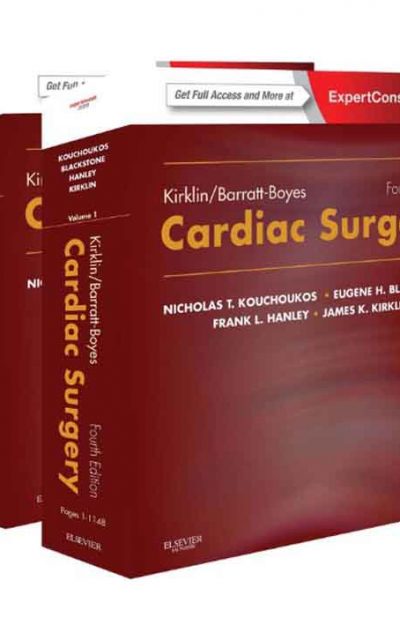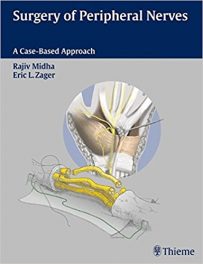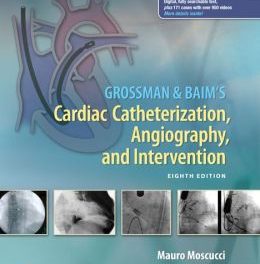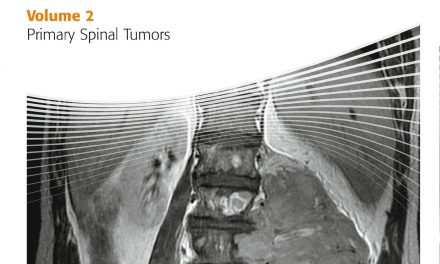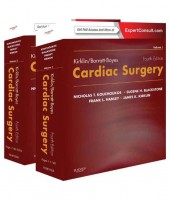 Book Review: Cardiac Surgery, 4th edition
Book Review: Cardiac Surgery, 4th edition
Authors: Nicholas T. Kouchokous, Eugene H. Blackstone, Frank L. Hanley, & James K. Kirklin. Contributors: Colleen Koch and Chandra Ramamoorthy
Publisher: Elsevier Saunders, 1780 pages
Book Review by: Nano Khilnani
This book of two volumes discusses basic concepts of cardiac surgery in Volume 1. In Volume 2, the indications for operation in each chapter, and other matters are covered.
Among the basic concepts are: anatomy, support techniques, myocardial management, anesthesia, postoperative care, and methodology for generating new knowledge from previous experience. The indications for operation are the derivatives of comparison of various outcomes or results of alternative forms of treatments, including no treatment.
With this book, you get access to a whole lot of resources on www.ExpertConsult.com
Go to the inside front cover of this book, then scratch off the label to get your Activation Code.
If you are already a registered user at that site, enter the Activation Code in the Add a Title box. Then click Activate Now. Then click the title under My Titles.
If you arte a first-time user, click on Register Now at ExpertConsult.com, fill in your user information and click Continue. To activate your book’s online resources, enter the Activation Code into the Enter Activation Code box, click on Activate Now, and then finally click the title under My Titles.
The material you will find on the website highlighted above can be accessed through any Internet-ready device such as a desktop computer, laptop, or even a Smart phone. The information relating to this textbook is not only mobile and searchable, but is in addition to what is found in the print version of this title.
This book contains 58 chapters in total, with 29 in each Volume. Parts I to VI are in the first volume, while Part VII constitutes the entire contents of the second volume.
To give you an overview, here are the titles of Parts I to VI:
• I – General Considerations
• II – Ischemic Heart Disease
• III – Acquired Valvar Heart Disease
• IV – Other Cardiac Conditions
• V – Diseases
• VI – Congenital Heart Disease in the Adult
Meanwhile in Volume 2, the entire contents are found in Part VII.
• Part VII – Congenital Heart Disease
A highly unusual but very helpful feature of this book is a detailed description of the contents of each chapter, which helps the cardiac surgeon or student go right to the page that contains the material relevant to the topic.
So for example, chapter 1 Anatomy, Dimensions, and Terminology in Part I General Considerations contains discussions, photos, and sketches of the various parts of the human cardiovascular system.
Here you will see what the various anatomical parts look like and read along the discussions as you see them: cardiac chambers and major vessels; atrial septum and ventricular septum; conduction system; cardiac valves; coronary arteries; dimensions of normal cardiac and great artery pathways; dimensions of normal ventricles; terminology and classification of heart disease; and appendices at the end of the chapter.
Detailed sketches of diseased hearts from various angles illustrate its various parts while captions explain functions and limitations caused by its condition. Photos of the disorders in the heart taken during surgery show the attendant problems. These are great learning tools provided by the authors.
Angiograms constitute another great set of tools. Charts, figures, formulas, tables, and other visual aids help readers understand the material faster than reading text.
This is a very valuable book in the libraries of medical students, residents, and practitioners in cardiology and cardiac surgery. The immense amount of information including visual material in it is indispensable.
The authors named below have worked hard to make this updated – fourth – edition of the book more useful than ever before.
Additional resources available to purchasers of this book are found on: www.ClinicalKey.com.
ClinicalKey is specifically designed to serve doctors by providing three core components:
1. Comprehensive Content – the most current, evidence-based answers available for every medical and surgical specialty.
2. Trusted Answers – Content supplied by Elsevier, the world’s leading provider of health and science information.
3. Unrivaled Speed to Answer – Faster, more relevant clinical answers, so you can spend less time searching and more time caring for patients.
Here is some information about the physicians responsible for this book:
Nicholas T. Kouchokos, MD is Attending Cardiothoracic Surgeon in the Division of Cardiovascular and Thoracic Surgery at Missouri Baptist Medical Center in St. Louis, Missouri.
Eugene H. Blackstone, MD is Head of Clinical Investigations at the Heart and Vascular Institute, a member of the staff in the Departments of Thoracic and Cardiovascular Surgery and Qualitative Health Sciences, and Professor of Surgery at the Cleveland Clinic Lerner College of Medicine of Case Western Reserve University in Cleveland, Ohio. He is also Professor of Surgery at the University of Toronto in Toronto, Canada.
Frank L. Hanley, MD is Professor of Cardiothoracic Surgery at Stanford University, and Executive Director of the Pediatric Heart Center at Lucille Packard Children’s Hospital in Stanford, California.
James K. Kirklin, MD is Professor and Director of the Division of Cardiothoracic
Surgery at the University of Alabama at Birmingham in Birmingham, Alabama.
Colleen Koch, MD, MS is Vice Chair of Research and Education in the Department of Cardiothoracic Anesthesia at the Cleveland Clinic in Cleveland, Ohio.
Chandra Ramamoorthy, MBBS, FRCA is Professor of Anesthesiology at Stanford University Medical Center, and Director of the Division of Pediatric Cardiac Anesthesia at Lucille Packard Children’s Hospital in Palo Alto, California.

